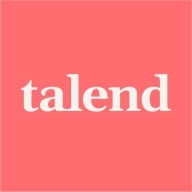

Skyvia and Talend Data Fabric are leading data integration platforms. Skyvia seems to have the edge in ease of use and pricing, while Talend offers a more extensive feature set that justifies its higher cost.
Features: Skyvia offers cloud-based data integration, backup, and simplicity-focused efficiency. Talend Data Fabric provides a wide range of data management capabilities, advanced data transformation, and integration solutions tailored for complex requirements.
Ease of Deployment and Customer Service: Skyvia's cloud-based model reduces deployment time and facilitates quick onboarding, supported by efficient customer service. Talend Data Fabric's setup is more intricate, offering flexibility for complex enterprise deployments. Its customer service, though robust, may require more interaction.
Pricing and ROI: Skyvia's competitive pricing and straightforward cost structure make it appealing for budget-oriented businesses. Talend Data Fabric's advanced offerings entail higher upfront costs, offering long-term value and potentially higher ROI for enterprises seeking comprehensive data solutions.

Skyvia is a cloud-based data integration platform enabling seamless data connection, management, and analysis across cloud apps and databases.
Skyvia offers a comprehensive suite for ETL, data backup, replication, and connectivity across major cloud services. It's designed for users requiring robust data manipulation and transfer capabilities without extensive coding knowledge. Its intuitive tools simplify complex tasks like data synchronization and transformation.
What are the key features of Skyvia?Industries like e-commerce, finance, and healthcare implement Skyvia to achieve efficient data processing and analytics integration, ensuring consistent data flow and real-time insights into operations.
Talend, a leader in cloud data integration and data integrity, enables companies to transform by delivering trusted data at the speed of business.
Talend Data Fabric offers a single suite of apps that shorten the time to trusted data. Users can collect data across systems; govern it to ensure proper use, transform it into new formats and improve quality, and share it with internal and external stakeholders.
Over 3,000 global enterprise customers have chosen Talend to help them turn all their raw data into trusted data to make business decisions with confidence — including GE, HP Inc., and Domino’s.
We monitor all Data Integration reviews to prevent fraudulent reviews and keep review quality high. We do not post reviews by company employees or direct competitors. We validate each review for authenticity via cross-reference with LinkedIn, and personal follow-up with the reviewer when necessary.